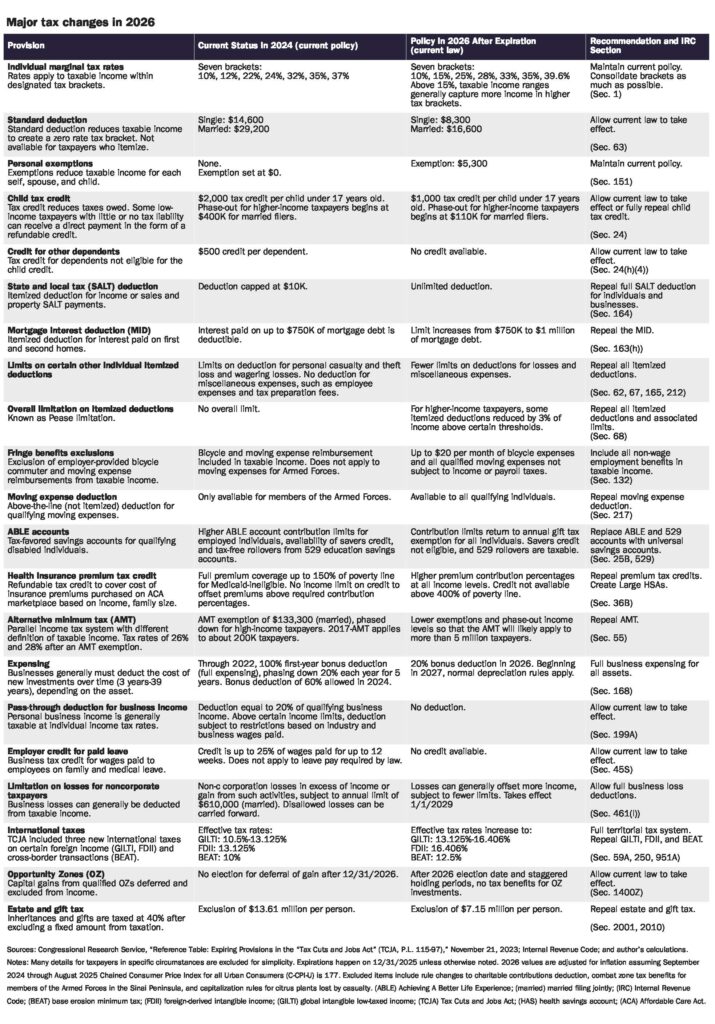
By StacieStauffSmith Photos @ Shutterstock.com
If the 2017 Trump tax cuts aren’t extended, there will be some major changes to the tax code in 2026, and you could be affected. The Cato Institute’s Adam N. Michel explains the changes and puts them into a neatly displayed chart you can find below. Michel writes:
In 2017, Republicans cut and reformed taxes for individuals and businesses. The vast majority of the changes for individuals expire at the end of 2025, which will increase taxes in 2026 by about $400 billion a year. There is broad bipartisan support to extend about three‐quarters of the tax cuts.
In addition to cutting individual and corporate tax rates, the 2017 reforms simplified taxpaying for millions of Americans, streamlined family tax benefits, and overhauled the international tax system, among many other reforms. Due in large part to the changes in business taxes, the law boosted economic growth, investment, and wages.
Before the end of 2025, lawmakers will need to address the pending tax increases and wrestle with their budgetary impact. Congress also has a number of other fiscal policy deadlines in 2025 and 2026, which include the reinstatement of the debt limit and possible sequestration (EPIC has a nice summary of upcoming fiscal policy deadlines here).
The following table provides a summary of current policy, the tax changes that will take effect automatically in 2026, and an abbreviated recommendation for how to address the changes. The table does not include the 2017 corporate income tax cut from 35 percent to 21 percent because the change was permanent. Changes that have already taken effect, such as research spending amortization and stricter limits on interest deductibility, are also excluded. If not addressed before 2025, these will also be important considerations for any tax package.
As Congress tackles tax reforms in 2025, it should balance broader budgetary constraints, additional tax simplification, and economic growth. Many of the provisions below interact with each other, and the reforms proposed will have implications for other parts of the tax code that should also be addressed. The table is intended to be a cheat sheet for the automatic tax changes at the end of 2025.
Action Line: It’s not too early to begin considering the effect these tax code differences will have on you and your family. Click here to subscribe to my free monthly Survive & Thrive letter.

E.J. Smith - Your Survival Guy
Latest posts by E.J. Smith - Your Survival Guy (see all)
- Your Survival Guy’s Atlantic Crossing - May 2, 2024
- Is the Fed Campaigning for Biden? - May 2, 2024
- Are You Prepared to Protect Yourself Abroad? - May 2, 2024
- Survive and Thrive April 2024: Our Dog Louis Passed Away on April 17th - May 1, 2024
- Dear Retired, or Soon to Be Retired, Investor - May 1, 2024













